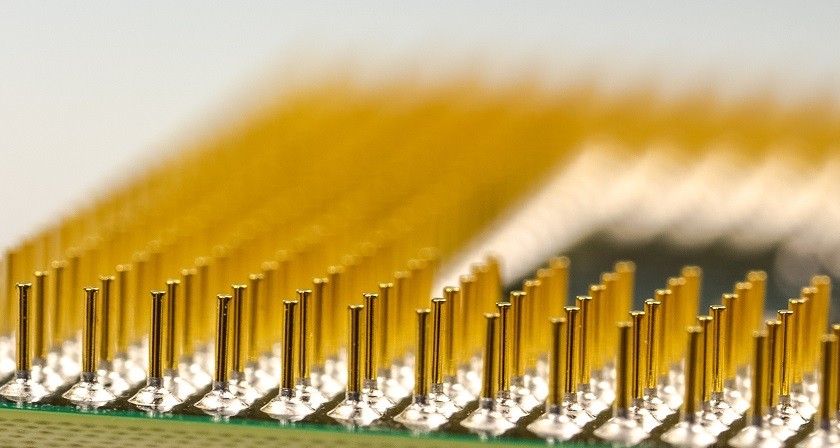UL 94 flammability rating for adhesives and encapsulants
The UL 94 flammability rating is used for materials (incl. adhesives, coatings and encapsulants) in electronics and can sometimes required.
The UL 94 flammability rating is used for materials (incl. adhesives, coatings and encapsulants) in electronics and can sometimes required.
UL 94 is a flammability test for polymeric materials that are being sold to and used in electronic devices. UL 94 classifies plastic materials (including adhesives, potting resins, coatings etc) according to how they burn. This includes both how easily a material is set on flame and how quickly it self-extinguishes after the flame is removed.
If a material is UL certified, it is verified that the electronic device can operate safely under normal conditions without high risk of fire or electrical default.
There are three types of tests performed under the UL 94 standard. In principle, all of them are similar; You expose a piece of the material to a flame and then measure how long it takes for it to self-extinguish and what happens to the piece itself.
One type of test is called Horizontal Burn. This test can give a material the flammability classification UL 94 HB if it passes the test (see table below). This is the lowest rating. The procedure of the test is to apply a flame for 30 seconds to one end of a horizontally held piece of material. After the flame is removed, the flame must self-extinguish, and the burning rate must be slower than specified for the thickness of the specimen to pass the test.
The other method is called Vertical Burn. The sample specimen is placed vertically, and a flame is directed towards the bottom of it. After 10 seconds, the flame is removed and the time the piece continues to burn and glow are noted.The same procedure is repeated a second time on the same specimen and for five different specimens. The results from this test can give three levels of flammability rating.
Surface Burn is a version of the vertical burn but with a bigger flame and more repeated tests on the same specimen. This is the most aggressive test within the UL 94 standard and hence also gives the highest flammability rating. The test is performed similarly to VB but using a larger flame. After 5 seconds, the flame is removed, and times noted. This is repeated 5 times for each specimen and for 5 different specimens.

Here is a summary of the different UL 94 flammability ratings, arranged from highest to lowest.
| UL 94 rating | Method | Requirements |
| 5VA | SB | Highest rating. Self-extinguishes within 60 seconds. No holes may be present in the specimen. |
| 5VB | SB | Self-extinguishes within 60 seconds but there may be holes in the specimen. |
| V-0 | VB | Self-extinguishes within 10 seconds and may not drip. |
| V-1 | VB | Self-extinguishes within 60 seconds and may not drip. |
| V-2 | VB | Self-extinguishes within 60 seconds and may drip. |
| HB | HB | Burns slower than specified in the standard for a certain thickness. Lowest rating. |
Fire resistant components give design engineers and customers trust that the electrical unit will be able to deliver the necessary performance. Flammability tested components also give a lower safety risk. UL 94 is the most common standard for adhesives, potting resins and coatings within the electronics industry.
Bear in mind that the UL approvals are specified to cerain dimensions of the specimens tested, size of the flame etc. This is most likely not the case in a real-life situation. It is therefore important to verify the flammability for your specific application.
A material can be tested according to the UL 94 standard but by a third-party laboratory. This would mean they are not registered with the UL (Underwriters’ Laboratory) but would likely pass if they were.
Här kommer ett urval av produkter som är UL 94-godkända. Hittar du ingen som passar, kontakta oss för fler valmöjligheter.
Most silicones are by nature capable of at least an HB flammability rating. Fillers can improve the flame resistance further.
Silicone products from Nusil marked are flame retardant are not officially certified.
Nusil SFM-2350 (flame retardant silicone foam)
The flammability of epoxies can also be improved with certain filler materials.
ALH Systems NP1003 (UL 94 V-0)
ALH Systems NP1025 (UL 94 V-0 not certified)
Bectron PU 4537 (UL 94 V-0)
Bectron PU 4522 (UL 94 V-0)

Removing a cured adhesive can be tricky and the type will determine the method. The main methods are heat, chemicals and mechanical force.
Read more
When choosing an adhesive for your application, it is advantageous if you consider the adhesive viscosity to best suit your application and process.
Read more
Medical grade adhesives are commonly biocompatibility tested according to ISO 10993 standard. Choose Epoxy, UV-curing adhesive or silicone.
Read more
Electrically conductive adhesives are used in many different types of industries and applications. Some examples are electronics, solar cell, medical, aerospace, space and automotive applications.
Read more
Silicone rubber is one of the most difficult-to-bond rubbers. We will give you options for adhesives that can help you bond silicone.
Read more